第52章 SYMPATHY(3)
The course and symptoms of the attacks were in general as follows:- There came on at first a feeling of faintness, with rigour and a sense of weight at the pit of the stomach, soon after which the patient cried out, as if in the agonies of death or the pains of labour.The convulsions then began, first showing themselves in the muscles of the eyelids, though the eyes themselves were fixed and staring.The most frightful contortions of the countenance followed, and the convulsions now took their course downwards, so that the muscles of the neck and trunk were affected, causing a sobbing respiration, which was performed with great effort.Tremors and agitation ensued, and the patients screamed out violently, and tossed their heads about from side to side.As the complaint increased it seized the arms, and its victims beat their breasts, clasped their hands, and made all sorts of strange gestures.The observer who gives this account remarked that the lower extremities were in no instance affected.
In some cases exhaustion came on in a very few minutes, but the attack usually lasted much longer, and there were even cases in which it was known to continue for sixty or seventy hours.Many of those who happened to be seated when the attack commenced bent their bodies rapidly backwards and forwards during its continuance, making a corresponding motion with their arms, like persons sawing wood.Others shouted aloud, leaped about, and threw their bodies into every possible posture, until they had exhausted their strength.Yawning took place at the commencement in all cases, but as the violence of the disorder increased the circulation and respiration became accelerated, so that the countenance assumed a swollen and puffed appearance.When exhaustion came on patients usually fainted, and remained in a stiff and motionless state until their recovery.The disorder completely resembled the St.Vitus's dance, but the fits sometimes went on to an extraordinarily violent extent, so that the author of the account once saw a woman who was seized with these convulsions resist the endeavours of four or five strong men to restrain her.Those patients who did not lose their consciousness were in general made more furious by every attempt to quiet them by force, on which account they were in general suffered to continue unmolested until nature herself brought on exhaustion.
Those affected complained more or less of debility after the attacks, and cases sometimes occurred in which they passed into other disorders; thus some fell into a state of melancholy, which, however, in consequence of their religious ecstasy, was distinguished by the absence of fear and despair; and in one patient inflammation of the brain is said to have taken place.No sex or age was exempt from this epidemic malady.Children five years old and octogenarians were alike affected by it, and even men of the most powerful frame were subject to its influence.
Girls and young women, however, were its most frequent victims.